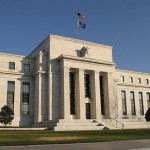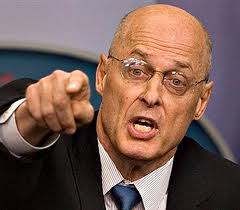Quantitative easing has been the Fed’s major policy to resurrect the economy since late-2008, but after spending hundreds of billions in the process, it is now fair to ask if better tools were available to resurrect the economy faster than massive bond purchases.

It’s a legitimate question, especially considering the latest nominal GDP numbers released show a 2.9% nominal rate, the lowest since World War II, according to Bloomberg radio.
Nominal GDP (real GDP plus inflation) is 2.9%. “This is a stunning number,” according to Tom Keene of Bloomberg radio. Looking at nominal GDP rates going back to 1963, with the exception of recessions in 1981, 1991, 2001, 2007-2009, the nominal GDP rate has never been this low, Keene said on July 31, 2013.
In a separate report, JPMorgan economist Michael Feroli said potential GDP growth – a proxy for the long-run trend growth rate – in the United States has fallen below 2%.
“As recently as the late 1990s, potential growth in the U.S. was estimated to be around 3.5%; by our estimates that figure has recently fallen by half, to 1.75%,” Feroli said.
In past decades, consumers do not have the disposable income they need to propel the economy as they have done in decades past, according to Bruce McCain of Key Private Bank. As a result, businesses are reducing inventory and reluctant to invest until they see stronger consumer spending, he added.
GDP remains “quite weak” and should not improve significantly in the second half of 2013, according to economist Ed Yardeni. GDP was 0.1% and is now 1.7%, which indicates a weak economy. Even though the spending cuts were attributable to reduced government spending, the recovery has been “sub-par,” Yardeni said. Job growth has largely seen the hiring of part-time workers, while employers remain cautious about hiring now, he added.
“The reality is these numbers are weak, all the downward revisions are weak, the historical revisions are weak, this is an economy which has been surprisingly resilient numbers given how slow the growth rate has been.” Yardeni said. In short, QE is not working, so why is the Fed adding more to its balance sheet Yardeni said.
All this raises the questions: Did the Fed use the wrong strategy to quickly resurrect the U.S. economy and regenerate GDP? What would have happened if the Fed directly bought the debt and equity of troubled financial institutions, rather than just buying their bad loans?
QE Problems Originated in TARP
Before the Fed started buying huge amounts of Treasury bonds ($45 billion a month in U.S. Treasuries, plus $40 billion a month in mortgages) as part of its QE strategy, there was TARP, the Troubled Asset Relief Program.
Bond buying began with QE I in late-2008, when the Fed had between $700 billion and $800 billion on its balance sheet. In addition to distorting supply-demand market balances, these huge purchases have created unusually low interest rates. Low rates benefit borrowers, but hurt bank savers, pension funds and investors who need interest income. The related danger is that the huge purchases will ignite inflation when the Fed reduces its bond purchases, according to the Wharton School.
The net result is this, according to a conservative blog:
“Why is the Fed doing this? Because they think that giving money to the financials will lead to those financials investing that money in the economy. We’ve done two rounds of quantitative easing and something else that is like it, plus TARP. So far? Hasn’t worked. The financial institutions have gotten richer. The stock market has rebounded because of all the money pumped in, but jobs have not been created and American’s standard of living has slumped.”
And another view comes from John Doukas, managing editor of European Financial Management, and Chair in Finance and Eminent Scholar at Old Dominion University, Virginia, who wrote in April 2013:
“The repeated Quantitative Easing (QE) policies of the US Federal Reserve in the aftermath of the global financial crisis, with similar actions by the Bank of England and the European Central Bank (ECB), have failed miserably to restore growth and reduce unemployment.”
Was A Better Strategy Available?
In a September 2008 paper, “Systemic Banking Crises: A New Database, International,” published by the International Monetary Fund, authors Luc Laeven and Fabian Valencia, examined the history of various bailout programs worldwide conducted from 1970 to 2007, and focused on 42 distinct crises. In 32 of those cases, the various national governments intervened to various degrees by injecting cash and government bonds; issuing subordinated debt, preferred and common stock; buying nonperforming loans; and, taking no action at all. The initial TARP action proposed in September 2008 by

then-Treasury Secretary Henry Paulson (appointed by George Bush) of using $700 billion of taxpayer money to save the financial system, was used in fewer than 25% of the banking crises cited in the IMF paper. The Treasury subsequently announced a second plan to directly buy $250 billion in bank equity.
Different Types of Interventions
Based on their data, the IMF authors cited two different approaches to resolve banking crises: the purchase of debt or equity or the outright purchase of bad loans from lending institutions. An analysis by the economics consulting firm International Strategy & Investment (ISI) found that governments that injected capital into the system by buying equity, preferred stock, or common shares saw significant increases in stock market returns two years after the start of the crisis. (Cited from the ISI Portfolio Strategy Report, “A Brief Review of Banking Bailouts… And Their Implications,” October 3, 2008.)
These market gains were accompanied by decreases in consumer price index growth and enjoyed lower fiscal costs (as measured by a percentage of gross domestic product (GDP)) than countries that followed a policy of purchasing bad loans. The same report found that the real GDP growth rate in countries that bought bank debt and equity was more stable than in countries that purchased bad loans from banks. The outcome of a bailout program was also determined by how quickly a government responded to the crisis. The faster the response, the faster the recovery. In contrast, a slow government response contributed to Japan’s poor economy during the mid-1990s, when that country saw sharp declines in real estate and equity prices.
The authors of the IMF study found that there is no “best” way to resolve a financial crisis since each one is unique to a specific country and its public policy priorities. Among the priorities policy makers must consider are whether to focus on reducing the crisis’ fiscal costs, limiting economic costs as measured by output and unemployment, and how to accelerate long- and short-term restructuring.
The common problem in restoring any nation’s economy after a financial crisis is how to reignite the investment process. This is extremely expensive and requires policy makers to divert money from taxpayers, while simultaneously facing the danger that capital misallocations can prompt banks and firms to assume more risk, the study said.
The U.S. Experience
Back in the U.S.A., the credit crunch became very intense due to a convergence of factors, many of which produced unintended consequences. These included the extensive use of off-balance sheet investments; higher loan-to-value lending that exceeded 100% of a home’s value; mortgage fraud; conflicts at rating agencies; and excessive leverage. Another factor that only added to the downside momentum was mark-to-market pricing, which made performing structured bonds less liquid. This directly impacted a company’s capital, credit rating, stock price, and borrowing costs.
Then, there was the inconsistent federal bailout policy applied to Bear Sterns, Lehman Brothers, Fannie Mae, and Freddie Mac which confused investors about which company was solvent and how its different layers of credit structures would be treated if they faced bankruptcy.
While there have been a number of good books written about the TARP details and the subsequent politics involved in its implementation, few have addressed possible alternatives and whether a strategy cited in the IMF paper would have produced faster increases in job creation and GDP. But in order to consider that alternative, Fed and other Beltway policymakers would have had to re-evaluate their strategy to put Main Street ahead of Wall Street, mega-banks in front of average taxpayers. That will never happen until there is a fundamental shift in political leadership. But as the current dismal economic results show, almost eight years after the recession started, Wall Street won, so the Fed’s strategy now makes more sense.











